How to use Microsoft PowerShell on Linux to be more productive
You may already know that PowerShell is a cross-platform command line tool developed by Microsoft that allows you to perform various tasks on Windows, Linux, and macOS. But do you know how to install and use PowerShell on Linux? In this article, we’ll cover how to install PowerShell on different Linux distributions and how to leverage its power to streamline and automate your workflows.
Install PowerShell Core 6.0 on Linux system
To install PowerShell Core 6.0 in Linux, we will use the Microsoft Software Repository, which allows us to install through the most popular Linux package manager tools, such as apt-get, yum, etc.
Installation in Ubuntu 16.04
First, import the GPG key for that public repository, then register the Microsoft Ubuntu repository into the APT source to install PowerShell:
$ curl https://packages.microsoft.com/keys/microsoft.asc | sudo apt-key add - $ curl https://packages.microsoft.com/config/ubuntu/16.04/prod.list | sudo tee /etc/apt/sources.list.d/microsoft.list $ sudo apt-get update $ sudo apt-get install -y powershell
Installation in Ubuntu 14.04
$ curl https://packages.microsoft.com/keys/microsoft.asc | sudo apt-key add - $ curl https://packages.microsoft.com/config/ubuntu/14.04/prod.list | sudo tee /etc/apt/sources.list.d/microsoft.list $ sudo apt-get update $ sudo apt-get install -y powershell
Installation in CentOS 7
First, register the Microsoft RedHat repository into the YUM package manager repository list, and then install PowerShell:
$ sudo curl https://packages.microsoft.com/config/rhel/7/prod.repo > /etc/yum.repos.d/microsoft.repo $ sudo yum install -y powershell
How to use PowerShell Core 6.0 in Linux
In this section, we will briefly introduce PowerShell; we will see how to start PowerShell, run some basic commands, and operate files, directories, and processes. Then learn how to list all available commands, display command help, and aliases.
Enter the following command to start PowerShell:
$PSVersionTable

You can check the PowerShell version with the following command:
$ powershell
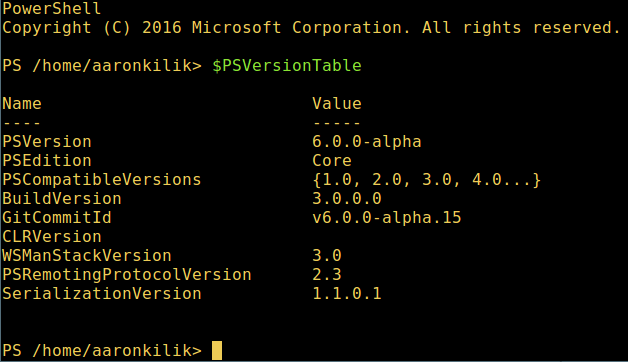
Run basic PowerShell commands in Linux:
get-date [# 显示当前日期] get-uptime [# 显示开机时间] get-location [# 显示当前工作目录]

Manipulating files and directories in PowerShell
1. You can create an empty file in two ways:
new-item tecmint.tex 或者 "">tecmint.tex
Then add content to it and view the file content:
set-content tecmint.tex -value "TecMint Linux How Tos Guides" get-content tecmint.tex
2. Delete a file in PowerShell
remove-item tecmint.tex get-content tecmint.tex
3. Create directory:
mkdir tecmint-files cd tecmint-files “”>domains.list ls

4. To perform a long-format list operation and list file/directory details, including mode (file type), last modification time, etc., use the following command:
dir

5. Display all processes in the system:
get-process
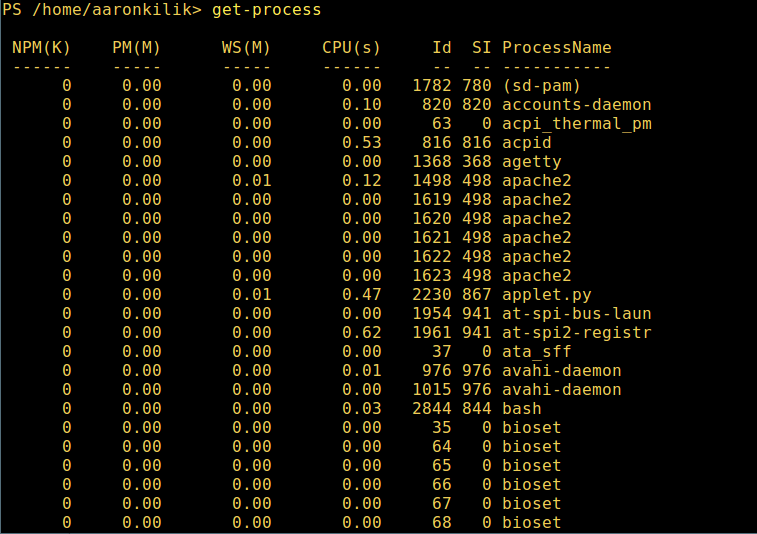
6. View the details of the running process/process group by the given name, and pass the process name as a parameter to the above command, as follows:
get-process apache2
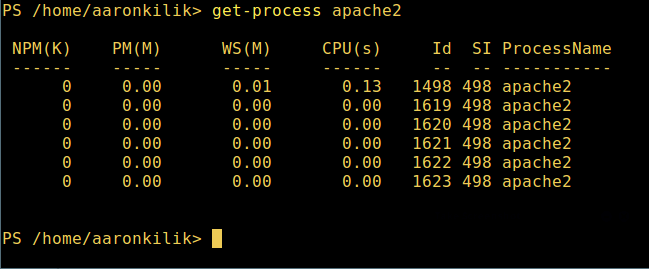
The meaning of each part in the output:
- NPM(K) – Non-paged memory used by the process, unit: Kb.
- PM(K) – pageable memory used by the process, unit: Kb.
- WS(K) – The working set size of the process, unit: Kb. The working set consists of the memory pages referenced by the process.
- CPU(s) – The amount of processor time consumed by the process on all processors, in seconds.
- ID – Process ID (PID).
- ProcessName – Process name.
7. To learn more, get the PowerShell command list:
get-command
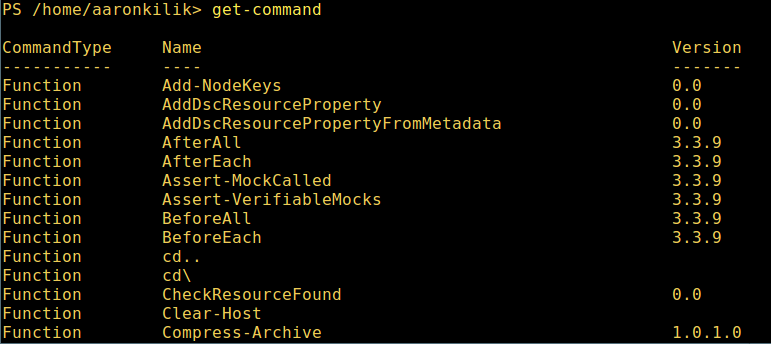
8. If you want to know how to use a command, check its help (similar to man in Unix/Linux); for example, you can get help for the command Describe like this:
get-help Describe
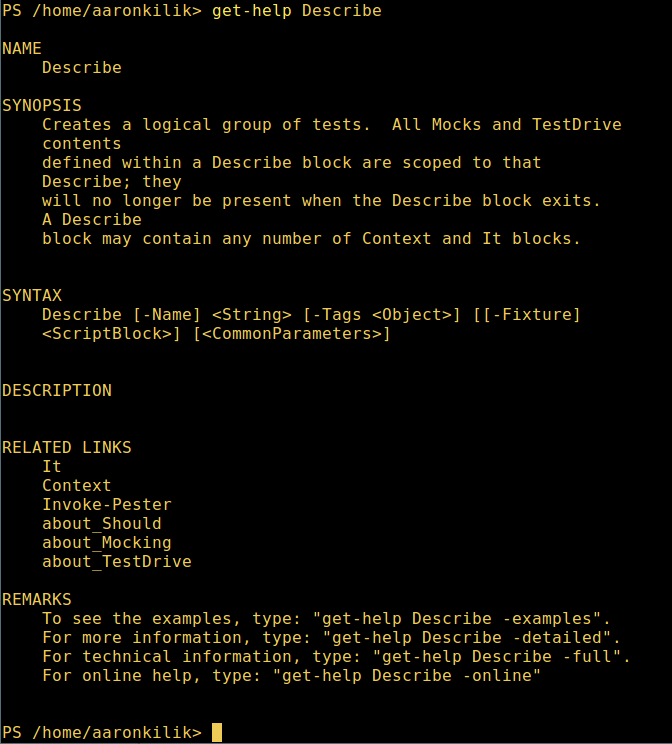
9. To display the aliases of all commands, enter:
get-alias
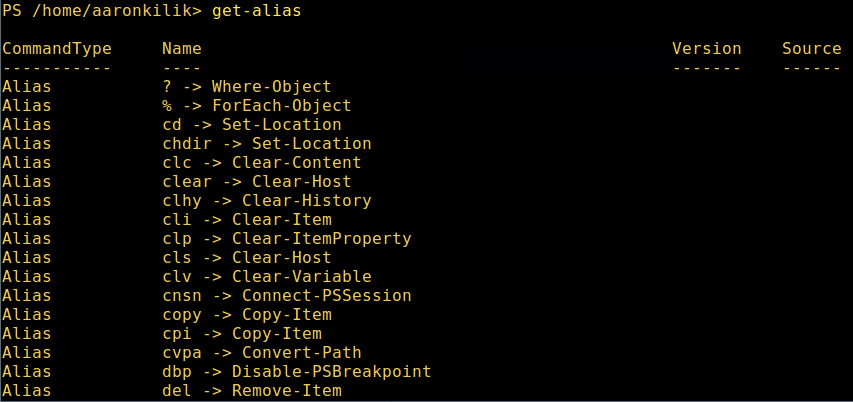
10、 最后,不过也很重要,显示命令历史记录(曾运行过的命令的列表):
history
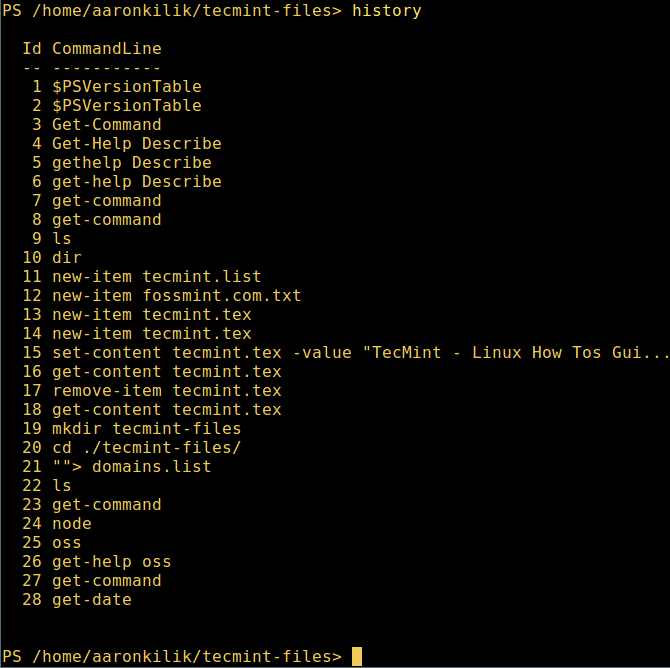
就是这些了!在这篇文章里,我们展示了如何在 Linux 中安装微软的 PowerShell Core 6.0。在我看来,与传统 Unix/Linux 的 shell 相比,PowerShell 还有很长的路要走。目前看来,PowerShell 还需要在命令行操作机器,更重要的是,编程(写脚本)等方面,提供更好、更多令人激动和富有成效的特性。
The above is the detailed content of How to use Microsoft PowerShell on Linux to be more productive. For more information, please follow other related articles on the PHP Chinese website!

Hot AI Tools

Undresser.AI Undress
AI-powered app for creating realistic nude photos

AI Clothes Remover
Online AI tool for removing clothes from photos.

Undress AI Tool
Undress images for free

Clothoff.io
AI clothes remover

Video Face Swap
Swap faces in any video effortlessly with our completely free AI face swap tool!

Hot Article

Hot Tools

Notepad++7.3.1
Easy-to-use and free code editor

SublimeText3 Chinese version
Chinese version, very easy to use

Zend Studio 13.0.1
Powerful PHP integrated development environment

Dreamweaver CS6
Visual web development tools

SublimeText3 Mac version
God-level code editing software (SublimeText3)

Hot Topics
 What computer configuration is required for vscode
Apr 15, 2025 pm 09:48 PM
What computer configuration is required for vscode
Apr 15, 2025 pm 09:48 PM
VS Code system requirements: Operating system: Windows 10 and above, macOS 10.12 and above, Linux distribution processor: minimum 1.6 GHz, recommended 2.0 GHz and above memory: minimum 512 MB, recommended 4 GB and above storage space: minimum 250 MB, recommended 1 GB and above other requirements: stable network connection, Xorg/Wayland (Linux)
 Linux Architecture: Unveiling the 5 Basic Components
Apr 20, 2025 am 12:04 AM
Linux Architecture: Unveiling the 5 Basic Components
Apr 20, 2025 am 12:04 AM
The five basic components of the Linux system are: 1. Kernel, 2. System library, 3. System utilities, 4. Graphical user interface, 5. Applications. The kernel manages hardware resources, the system library provides precompiled functions, system utilities are used for system management, the GUI provides visual interaction, and applications use these components to implement functions.
 How to run java code in notepad
Apr 16, 2025 pm 07:39 PM
How to run java code in notepad
Apr 16, 2025 pm 07:39 PM
Although Notepad cannot run Java code directly, it can be achieved by using other tools: using the command line compiler (javac) to generate a bytecode file (filename.class). Use the Java interpreter (java) to interpret bytecode, execute the code, and output the result.
 vscode terminal usage tutorial
Apr 15, 2025 pm 10:09 PM
vscode terminal usage tutorial
Apr 15, 2025 pm 10:09 PM
vscode built-in terminal is a development tool that allows running commands and scripts within the editor to simplify the development process. How to use vscode terminal: Open the terminal with the shortcut key (Ctrl/Cmd). Enter a command or run the script. Use hotkeys (such as Ctrl L to clear the terminal). Change the working directory (such as the cd command). Advanced features include debug mode, automatic code snippet completion, and interactive command history.
 How to check the warehouse address of git
Apr 17, 2025 pm 01:54 PM
How to check the warehouse address of git
Apr 17, 2025 pm 01:54 PM
To view the Git repository address, perform the following steps: 1. Open the command line and navigate to the repository directory; 2. Run the "git remote -v" command; 3. View the repository name in the output and its corresponding address.
 vscode cannot install extension
Apr 15, 2025 pm 07:18 PM
vscode cannot install extension
Apr 15, 2025 pm 07:18 PM
The reasons for the installation of VS Code extensions may be: network instability, insufficient permissions, system compatibility issues, VS Code version is too old, antivirus software or firewall interference. By checking network connections, permissions, log files, updating VS Code, disabling security software, and restarting VS Code or computers, you can gradually troubleshoot and resolve issues.
 Where to write code in vscode
Apr 15, 2025 pm 09:54 PM
Where to write code in vscode
Apr 15, 2025 pm 09:54 PM
Writing code in Visual Studio Code (VSCode) is simple and easy to use. Just install VSCode, create a project, select a language, create a file, write code, save and run it. The advantages of VSCode include cross-platform, free and open source, powerful features, rich extensions, and lightweight and fast.
 Can vscode be used for mac
Apr 15, 2025 pm 07:36 PM
Can vscode be used for mac
Apr 15, 2025 pm 07:36 PM
VS Code is available on Mac. It has powerful extensions, Git integration, terminal and debugger, and also offers a wealth of setup options. However, for particularly large projects or highly professional development, VS Code may have performance or functional limitations.






